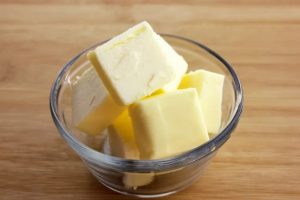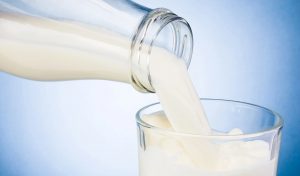
In turn, this combination has had a positive effect on dairy producers’ pocketbooks. But according to Tanner Ehmke, CoBank’s lead dairy economist, high butter and milk prices could spell bigger problems for dairy down the road.
Prices for retail butter are outpacing nearly all other goods — up 13% YTD according to the Bureau of Labor Statistics. Butter shortages coupled with food inflation have pushed prices 16% higher compared to April 2021. With consumers already facing sticker shock in the grocery store, heightened butter prices could cause consumers to back away from the dairy aisle.
“While high butter and milk prices are good news in the short term for producers, it’s a problem in the long run,” Ehmke says. “Consumers may be forced to shift to lower-cost store brands, or to butter alternatives like margarine, shortening, and vegetable oils as they face a double whammy of high butter prices right as inflation has muted their spending power. Demand could also deteriorate as consumers buy smaller quantities.”
Why the Shortage?
April butter inventories fell 23% below year-ago levels, and April marked the ninth consecutive month of year-over-year declines in stocks, according to USDA data. Several factors have contributed butter’s short supply.
Limited cream – According to Ehmke, U.S. consumers have shifted their dairy product preferences, putting more demand pull on tight cream supplies. While butter is the primary user of cream, it is also used in Class II products, such as whipping cream, ice cream and cream cheese. As summer ramps up, more cream is pulled away from butter and into ice cream and frozen novelty products. This pull will be happening at a time when butter supplies are already tight.
With the ice cream season ramping up, butter stocks could dwindle throughout summer as cream moves to other uses. If this happens, butter inventories will likely be low headed into the fall and winter baking season.
Tight labor supplies – Limited labor has also caused some butter plants to slow production, with Dairy Market News reporting that total butter output at some plants has fallen 15% to 20% due to short staffing.
Increased exports – “Resilient export demand is further tightening the U.S. butter balance sheet,” Ehmke notes. “The U.S. traditionally is a net importer of butter from countries like Ireland, but through most of 2021 and into 2022, the U.S. has shipped out more butter than it has brought in from foreign producers. U.S. butter export shipments are now the strongest since 2014 record levels, with Canada, Mexico, the Middle East and South Korea the key destinations.”
Higher prices in Europe – Increases in U.S. butter export demand have been driven by higher butter prices throughout Europe. According to Ehmke, weather issues, sustainability initiatives, high feed costs and Russia’s invasion of Ukraine have constrained milk production across the European Union along with New Zealand. These tight milk and cream supplies have lifted butter prices to record global highs.
Bad News for Demand?
According to the USDA, higher retail prices for butter are contributing to a decline in consumer purchasing. Butter demand in the food service industry is also softening due to some restaurants reducing their operating hours.
While butter demand is typically lower during the summer months, fall and winter butter demand ahead of baking season is likely to remain high. However, there is a clear shortage concern as increased fall demand outweighs current availability.
“With ongoing butter shortages, historically high butter prices are all but certain to continue for the remainder of 2022,” Ehmke says.
























